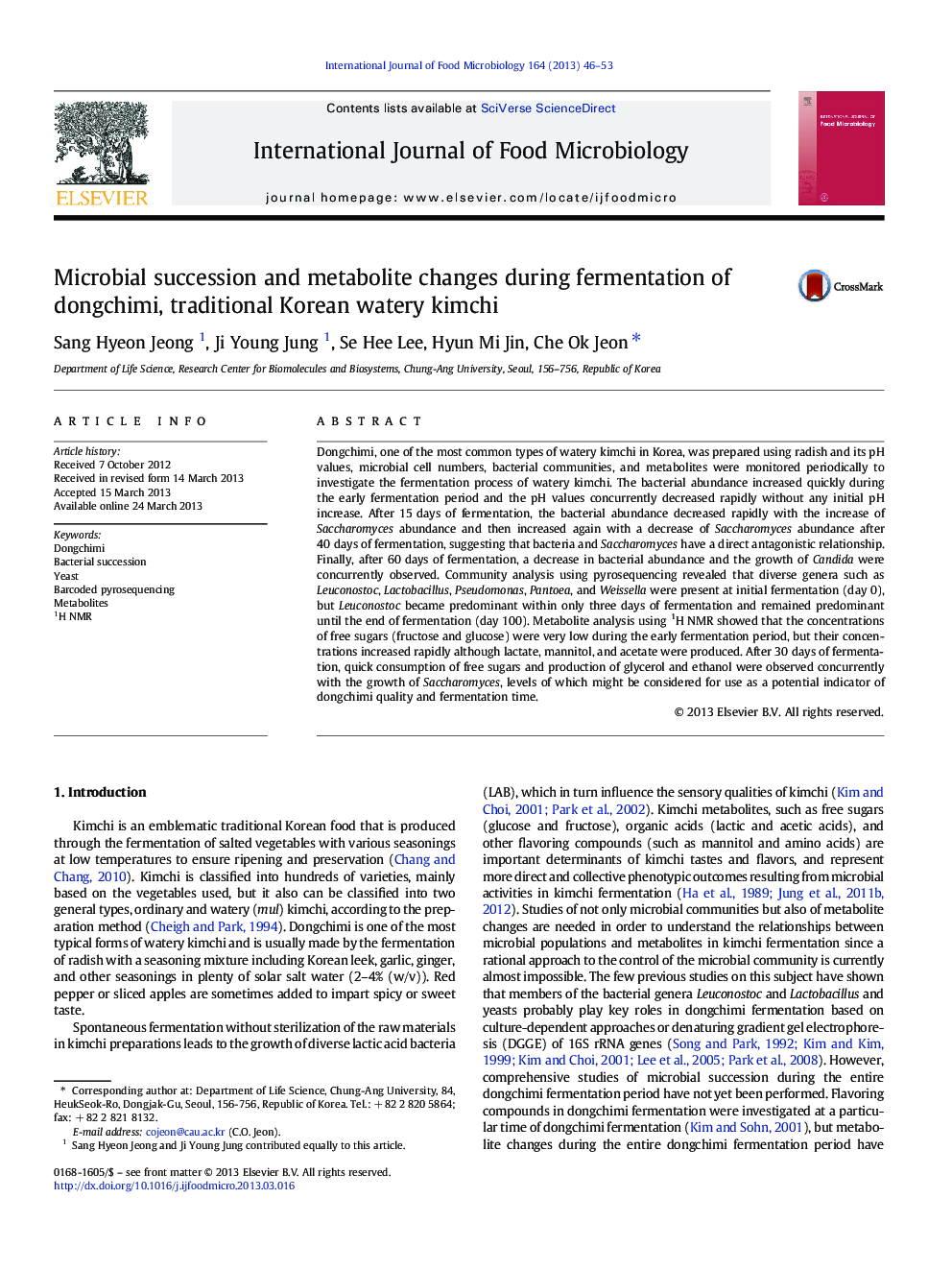| کد مقاله | کد نشریه | سال انتشار | مقاله انگلیسی | نسخه تمام متن |
|---|---|---|---|---|
| 4367187 | 1616624 | 2013 | 8 صفحه PDF | دانلود رایگان |

• Microbial succession and metabolite changes during dongchimi fermentation
• Antagonistic relationship between LAB and yeasts during dongchimi fermentation
• Relationship between microbial growth and metabolite production
• Growth of yeast might be an indicator for dongchimi spoilage.
Dongchimi, one of the most common types of watery kimchi in Korea, was prepared using radish and its pH values, microbial cell numbers, bacterial communities, and metabolites were monitored periodically to investigate the fermentation process of watery kimchi. The bacterial abundance increased quickly during the early fermentation period and the pH values concurrently decreased rapidly without any initial pH increase. After 15 days of fermentation, the bacterial abundance decreased rapidly with the increase of Saccharomyces abundance and then increased again with a decrease of Saccharomyces abundance after 40 days of fermentation, suggesting that bacteria and Saccharomyces have a direct antagonistic relationship. Finally, after 60 days of fermentation, a decrease in bacterial abundance and the growth of Candida were concurrently observed. Community analysis using pyrosequencing revealed that diverse genera such as Leuconostoc, Lactobacillus, Pseudomonas, Pantoea, and Weissella were present at initial fermentation (day 0), but Leuconostoc became predominant within only three days of fermentation and remained predominant until the end of fermentation (day 100). Metabolite analysis using 1H NMR showed that the concentrations of free sugars (fructose and glucose) were very low during the early fermentation period, but their concentrations increased rapidly although lactate, mannitol, and acetate were produced. After 30 days of fermentation, quick consumption of free sugars and production of glycerol and ethanol were observed concurrently with the growth of Saccharomyces, levels of which might be considered for use as a potential indicator of dongchimi quality and fermentation time.
Journal: International Journal of Food Microbiology - Volume 164, Issue 1, 3 June 2013, Pages 46–53